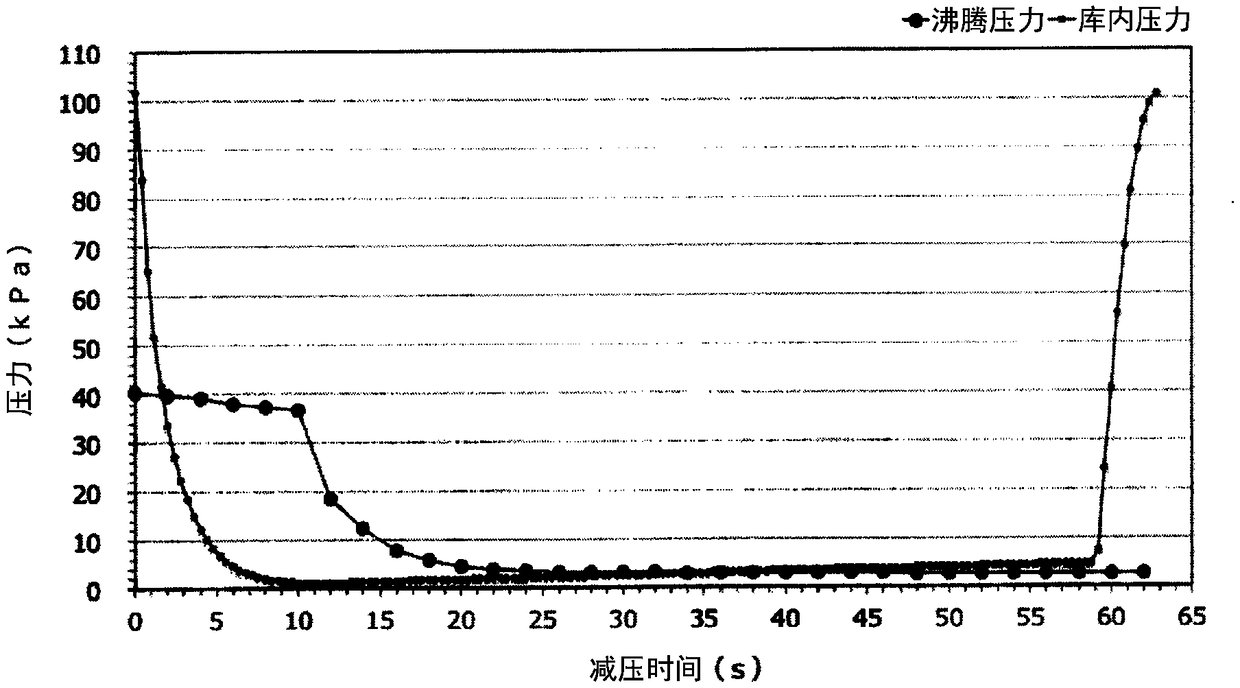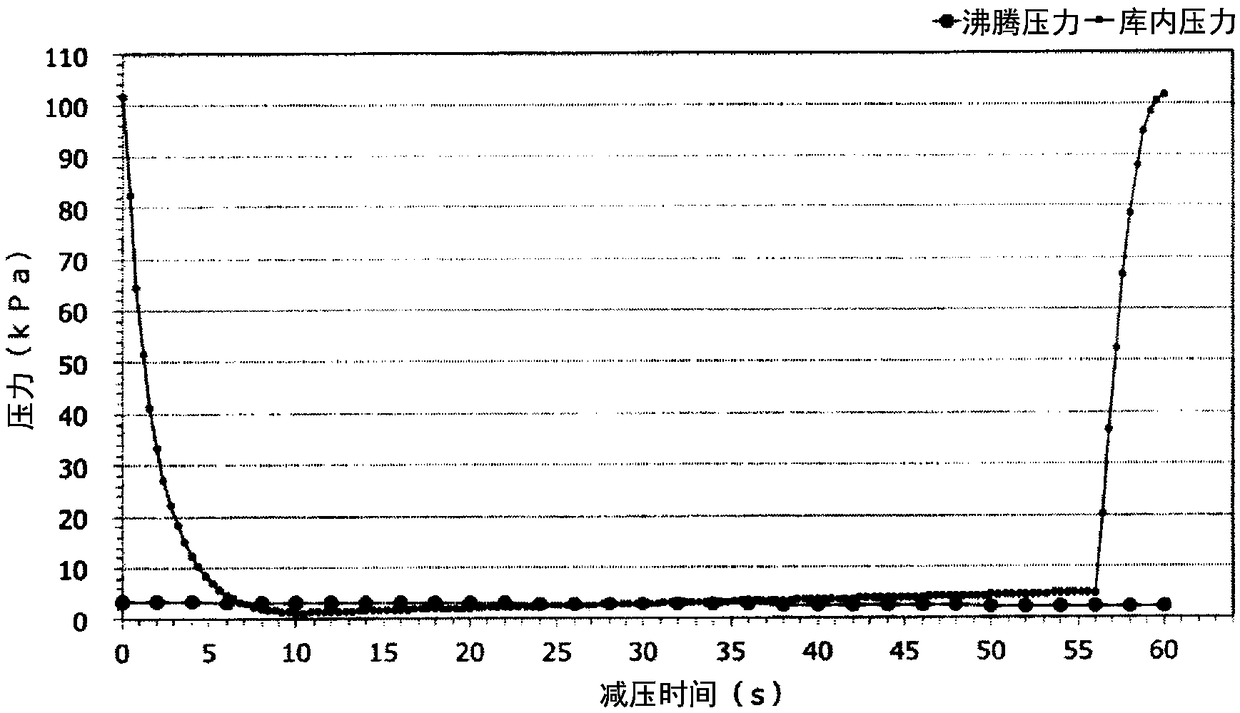The method of impregnating substances into food materials
An ingredient and infiltration technology, applied in food science, food preservation, kitchen utensils, etc., can solve problems such as unavailability, denaturation and inactivation of enzymes, etc.
- Summary
- Abstract
- Description
- Claims
- Application Information
AI Technical Summary
Problems solved by technology
Method used
Image
Examples
Embodiment 1
[0178]
[0179] Peel off the skin of commercially available carrots (raw), cut into discs with a width of 1 cm, demould into a cylinder with a diameter of 4 cm and a thickness of 1 cm, and then divide into 4 parts to make quarter discs.
[0180]
[0181] Heating was performed at 95° C. for 20 minutes in a steam convection oven (Maruzen, SSC-04MSC type). After heating and removing excess heat at room temperature, freeze in a freezer (HOSHIZAKI Denki Co., Ltd., HRF-120XFT type) set at -20°C for 16 hours or more.
[0182]
[0183] Pectin-decomposing enzyme (microorganism-derived enzyme, YAKULT Pharmaceutical Co., Ltd.) was dissolved in 0.1M citric acid buffer (pH 5.5) at a concentration of 0.5% (w / v). The prepared enzyme solution was vacuum-packed, cooled in ice water, and used at 5° C. or lower.
[0184]
[0185] Frozen carrots were thawed by immersing them in water at 20° C. for 30 minutes. Then, it was immersed and heated for 10 minutes in the constant temperature wa...
Embodiment 2
[0229] After thawing frozen carrots by immersing them in 20° C. water for 30 minutes, the heating temperature was set at 70° C., and the carrots were softened by processing in the same manner as in Example 1.
Embodiment 3
[0231] After thawing frozen carrots by immersing them in 20°C water for 30 minutes, the heating temperature was set at 60°C, and the carrots were softened by processing in the same manner as in Example 1.
PUM
 Login to View More
Login to View More Abstract
Description
Claims
Application Information
 Login to View More
Login to View More - R&D Engineer
- R&D Manager
- IP Professional
- Industry Leading Data Capabilities
- Powerful AI technology
- Patent DNA Extraction
Browse by: Latest US Patents, China's latest patents, Technical Efficacy Thesaurus, Application Domain, Technology Topic, Popular Technical Reports.
© 2024 PatSnap. All rights reserved.Legal|Privacy policy|Modern Slavery Act Transparency Statement|Sitemap|About US| Contact US: help@patsnap.com










